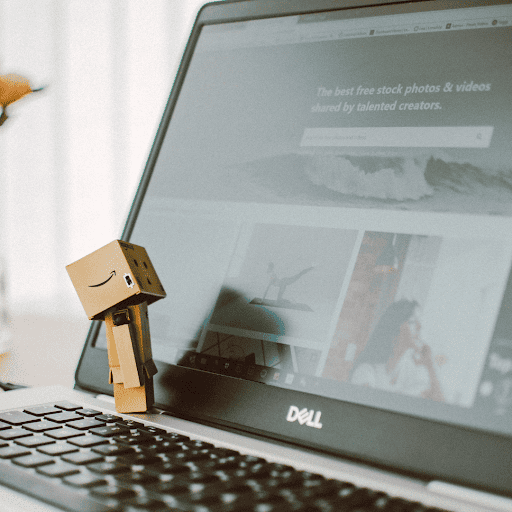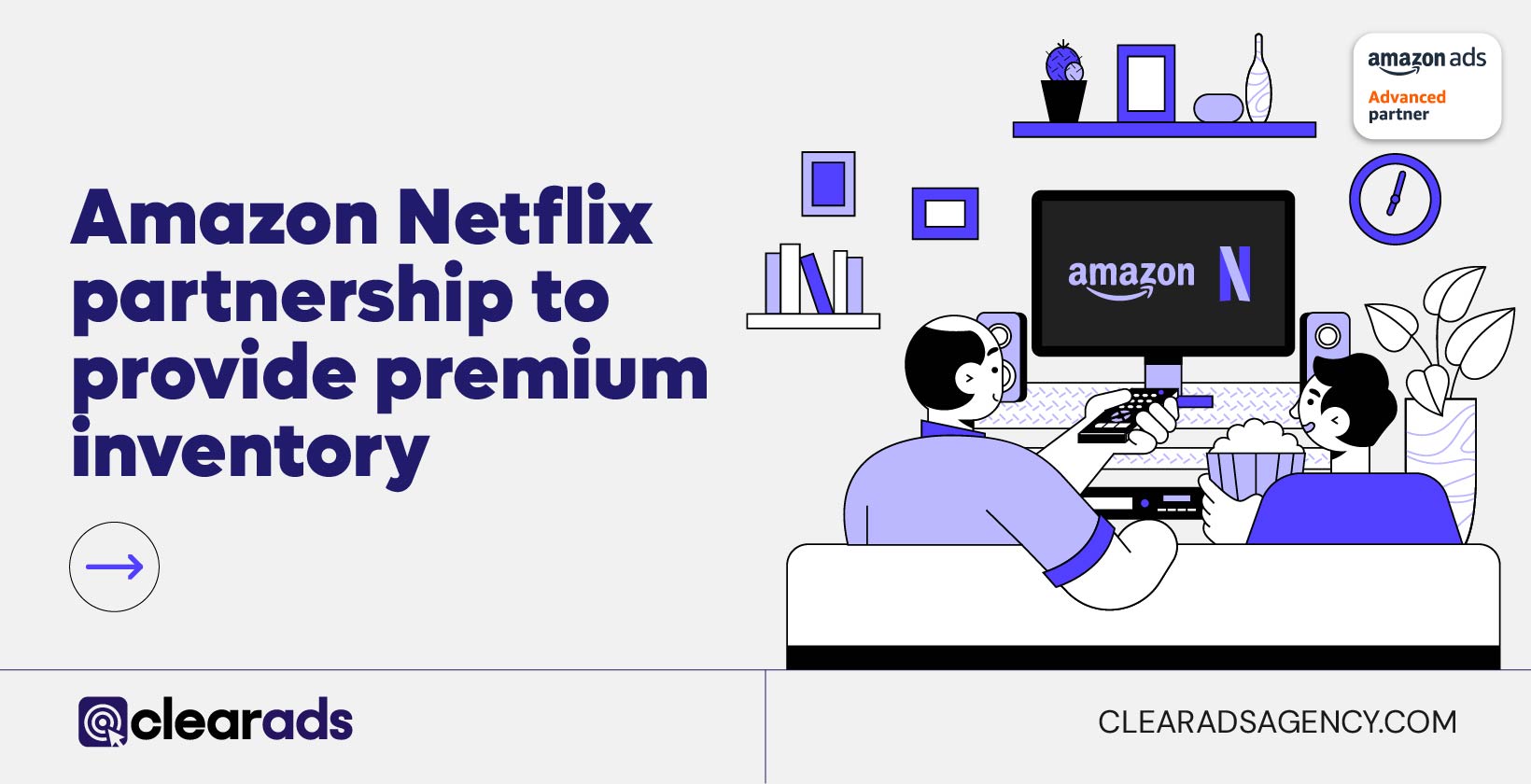The way we use technology is evolving so it is important to optimize your marketing in line with how we shop. Omnichannel marketing is a brilliant way of reaching new and existing customers through a cohesive and streamlined shopping experience. Read on to find out how to create your omnichannel strategy and how it can benefit your brand.
What is Omnichannel Strategy for Amazon?
An omnichannel strategy ensures a cohesive customer experience across all platforms associated with the brand. It means customers have a smooth shopping experience and guides them along the sales funnel.
Advantages & Importance
Omnichannel marketing is a great way to take your business from a product on Amazon to a brand in the real world. A big problem that Amazon sellers face is looking at Amazon like a fishbowl rather than advertising as though they are a regular brand. Through omnichannel marketing, you treat each platform as part of a cohesive unit that works together to provide a complete shopping experience for customers.
It is a significant way for customers to take you seriously as a brand. A holistic shopping experience makes the shopping journey seamless and improves the quality of the experience for customers. Cross-channel marketing will significantly upstage your brand and increase the chance of a resale!
This type of marketing is also a great way to expand your audience by creating new channels and introducing more customers to your brand. By meeting customers where they are, you streamline the purchasing funnel.
Omnichannel marketing has become increasingly popular due to the cross-platform capacities shoppers have now. We are constantly flipping from one app or device to the next, so the ability to create a universal experience adds a personal touch and makes you recognizable. It also means you can gather insights along the customer journey to learn how your audience interacts with your brand and where to invest more.
Omnichannel vs Multi-channel

Multi-channel marketing is often confused with omnichannel because the difference is not always clear. They both market to numerous channels, so why would you choose one over the other? Or how do you know which one you are using?
The key differentiating factor between the two types is that omnichannel involves marketing on every possible platform and creating a cohesive experience. Multi-channel is more selective and is more of a straight line than a mind map.
Another key difference is that multi-channel marketing cannot link to other sites in the same way omnichannel advertising can. For example, omnichannel could link to a prime account and send a follow-up email about something you were interested in. Multi-channel directs customers down a specific path to achieve a singular goal, like a billboard telling you to purchase a product.
In other words, omnichannel can be viewed as a fluid, flowing between each site, the way blood flows through the whole body. But multi-channel is static like a bone and can only connect with the next. The blood focuses on the entire body, whereas the blood looks at one singular objective.
How to Create an Omnichannel Strategy
User Experience
One thing to remember when creating an omnichannel strategy is the user experience. The key motivation for this strategy is an easier shopping experience for the customer.
Take some time to understand your consumer. What makes them click and buy, and what are the main pain points they experience shopping? Amazon is about putting the customer first, so the easier you make it for them, the more you will be favored by the platform.
Make it as easy as possible for them to purchase your product. Put yourself in the customer’s shoes and assess how easy it is to purchase your product. For example, was it a seamless experience, or were there too many steps?
Customer Journey
Omnichannel marketing reaches the customer where they are and pushes them to act across all platforms. Understanding the journey your customers take and what influences them to purchase will create a unique shopping experience for them and result in a higher chance of conversion.
This type of marketing allows you to make specific messages to various audiences, so understanding the customer journey will help you send the right message at the right time. So take time to understand and map out what steps your audience takes so you can produce a cohesive message.
It can iron out bumps in the journey and increase your ROI, so it is worth the time and effort.
Channel Expansion
Consider expanding the channels you are advertising on, so you can increase the visibility of your brand. For example, introducing Amazon Echo into your channels means introducing voice as a new way for customers to purchase your product.
This part of omnichannel marketing is a great way to introduce your brand to new customers by meeting them where they are. Plus, it will help you gather more information about how your consumers interact with your brand across platforms.
For example, you can use social media to remarket your brand to those who visit your store through the apps. This will keep your brand in mind the next time they shop.
Customer Data
Take time to gather as much data about your customers as you can. Amazon offers you a lot of information through Seller Central, like the search query performance tab, which will give you information along the entire customer journey.
You could also send out surveys to your existing customers asking them about their user experience so you can gather a better understanding of what their pain points are. It will help you understand what platforms customers use, and the pain points while purchasing.
You can then use this information to take information and turn it into actionable insights. It is effortless to use your own bias and experience and have that heavily reflected in your strategy. Instead, look at the information as it comes and build your strategy around how to make your customers’ lives easier.

Customer Service
It is all about the customer, and giving them a cohesive experience allows for a more positive and consistent experience for the customer.
This means that rather than being led down one direction, all the channels simultaneously work together to understand your customer. It adds a personal touch to your marketing strategy and increases ROI, brand loyalty, and the chance of purchase. This is because your brand gets a better reputation for being efficient and customer oriented!
Looking at the information with a fresh perspective and iron-out what your customers need will help the process. This way, you will know what your customers respond to and need, whether online or in-store.
Creative Advertising
It may seem obvious, but a boring advertisement wouldn’t encourage a look, let alone a purchase.
Use your creative team and consider split testing your creatives before implementing the long-term strategy. By doing this, you can identify what your customers interact with most. You may find that your most popular product will perform amazingly in one way but poorly in another.
This way, you implement the most effective strategy by putting your most creative advertising on the show. This will prevent you from wasting money on ad spend in the long run.
Diversification
You will want to expand your audiences to allow for new-to-brand customers and a greater number of conversions. Branch into different channels or demographics, and remember that failure breeds success. Knowing what doesn’t work will bring you closer to finding what does.
Don’t be afraid to fail and test our different audiences. Amazon has many platforms for you to expand into online and in-store. Experimenting will help you understand how your audience shops and what platforms they prefer so you create the most cohesive customer journey through your omnichannel marketing.
Testing & Optimisation
You can use split testing for your ads to identify what works best for various channels and how your customers interact differently. As I mentioned above, split testing can identify how your customer shops and what strategies are most effective.
You can test out different headings or images for the same product if you are willing to spend more to gather the information. This way, you can identify where and what pushes your customer to convert so you can strategize.
It will tell you which ads to place and where to save you money in the long run.

Amazon’s Omnichannel Strategy
Amazon has a range of channels you can incorporate into your strategy to engage customers. They offer integrations on Twitch, sponsored products, and more! This approach allows you to reach a range of customers at any stage in their journey to have the most effective campaign.
You can ensure that each customer interaction with your brand is effective and meaningful. It is about having your brand leave a positive stamp on its customers.
Customer Experience
Amazon’s priority is a positive customer experience. One of the most popular advances in the ‘Amazon-One-Click’ as it made purchasing products effortless.
It meant that once a customer signed in and set up their payment and shipping details, they merely needed to press the ‘buy now ‘ button for immediate purchases. It makes buying products a lot smoother since it reduces the number of clicks needed to buy the product. This adjustment improves the customer experience as it makes shopping less of a hassle since there is no need to follow a bunch of instructions each time!
Amazon has applied the same process to Echo devices, enabling customers to make purchases through voice commands! As our world is becoming increasingly immediate, Amazon has used the impatience of shoppers to their advantage.
Impulse buyers also love the ‘buy now’ button, giving them less time to question the purchase.
Channel Dominance
Amazon has a foothold in numerous online platforms, including Amazon Prime Video, IMDb, Twitch, and more! They also have physical stores now for the whole foods markets and Amazon Go stores, so they are truly spreading their wings in all directions.
It means they can reach their customers wherever they are and however, they like to shop.
Amazon Prime
Amazon Prime is Amazon’s solution to the customer data challenge. It offers a range of data points to assess the customer’s journey and shopping references. Prime gives customers access to a quicker delivery, Prime Music, Prime Video, and Books. You can even connect your Prime account to Deliveroo for a free delivery promotion.
They can connect with customers on their commonly used platforms, which allows for a holistic shopping experience and means they can collect as much information as possible.

Amazon Echo & Voice Search
Amazon Echo is an extra channel Amazon uses to reach customers as it gives the new feature of voice recognition. Not only is it a new channel, but it is a new form that makes purchases easier.
Voice is solidifying itself as an important channel for commerce, with an increasing number of searches being made over voice. It is convenient and can be done on the go; for example, if you are cleaning and run out of a product, you can use voice to order more. It will prevent you from stopping your flow, so you can focus on the task ahead.
Physical Locations
Amazon currently operates over 500 physical stores and plans on opening many more. Considering they are primarily known as an online store, the introduction of physical locations expands their reach massively.
There are still people who prefer to see what they are purchasing, especially regarding fresh produce. This way, Amazon can have direct contact with customers and identifies its versatility as a brand; by giving online and physical options. It also endorses the idea that they can supply all the needs of the customer.
Partnership
Amazon has teamed up with other retailers and service providers to offer exclusive deals to Prime members. These partnerships are a way to appeal to potential customers by offering deals with services like Deliveroo and Paramount +.
The incentive of these exclusive deals makes a Prime membership appealing, even if they never intended on using those services. It makes members feel like they are receiving more than just a membership and allows Amazon to remain a dominant name in E-commerce.
Omnichannel Trends
What are the current trends in e-commerce that could affect your omnichannel strategy?
- Brick and Mortar stores are becoming popular again – It will mean that you have a broader audience to advertise to and a wider reach. Sellers can gather data from in-store customers and online, so incorporating strategies for both audiences will ensure you reach the correct audience.
- AI is being incorporated into the shopping experience – These AI chatbots can be very useful for answering customer queries immediately. They can imitate human language and tone, which makes them easy and unintimidating. They significantly improve the customer experience by reducing the wait time for answering queries!
- Cross-device interactions have increased – Technology has advanced very quickly, and it is relevant to identify that shopping habits have changed with it. There is no one way to shop anymore since more than ever customers are using smart devices to make purchases or browse online stores. Ensure you have a cross-device campaign and your creatives are mobile-compatible. You can produce an omnichannel campaign that seamlessly incorporates desktop and mobile shopping for an effective strategy.
Amazon Omnichannel Case Studies
Amazon has a strong omnichannel strategy because it has progressed into so many different areas of commerce. Let’s take a look at some specific case studies and how they have helped Amazon dominate the space.
Amazon Go shops
These shops have created a unique shopping experience for customers. The appeal is that they are linked to your Amazon account, reducing the need for a regular checkout experience. Customers simply walk out of the store with what they need without interacting with people.
It is brilliant for anyone who likes a speedy shop or doesn’t want to talk to another person that day. It is a perfect example of fusing the ease of online shopping with the physicality of a store.
Amazon Prime
Prime offers amazing benefits to subscribers, including exclusive deals and next-day delivery on selected products. It has proven to be one of the most successful channels Amazon has implemented.
It gives data across numerous platforms and offers exclusive events like Prime Day! Amazon can use Prime as a powerful form of cross-channel advertising by meeting customers on whatever platform they are using with their Prime account.
Amazon Echo

Unlike the Fire phone, Amazon Echo was a huge success for Amazon as it implemented a new form of product purchasing and advertising. You can use it to add items to your cart or make repeat purchases.
Voice has become a powerful way of gaining information, and the ability to make purchases through the device at whatever point in the day makes it an unmissable element of omnichannel marketing!
Don’t forget that as an Amazon seller, you can be using your PPC and DSP campaigns as part of your omnichannel strategy! These campaigns can be useful for expanding your reach across various Amazon channels.
It is easy to forget what you already use when you begin looking at the bigger picture for marketing your brand. If you would like to know about how you can use your PPC and DSP campaigns to expand your brand visibility check out our case studies!
At Clear Ads, we are Amazon advertising specialists trained to use the Amazon advertising platform to help your business grow. We keep up-to-date on the latest techniques and trends. This includes knowing how to implement a successful omnichannel strategy.
Our job is to support your business, so if you want to upgrade your advertising strategy and incorporate all of the above, request a callback.


